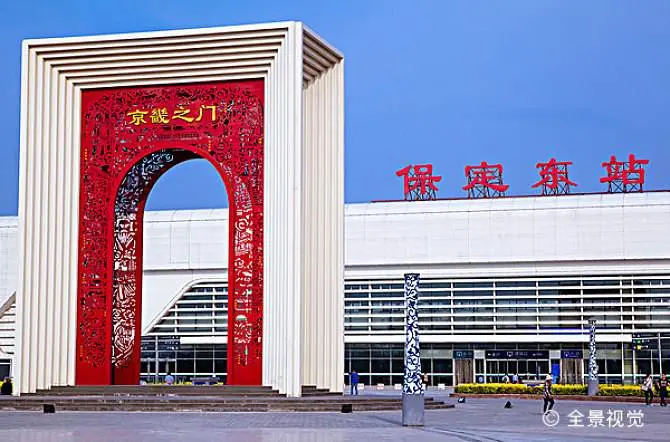Guangming Master Pagoda
Guangming Master Pagoda is located 25 kilometers southeast of Dingxing County, in the center of Daliu Village, Beinan Cai Township. It is 3.77 meters high and has a construction area of 2 square meters. The pagoda was built in the third year of the Jin Taihe period (1203 AD) in March. It has a unique architectural style, with the entire stone pagoda constructed from 13 layers of octagonal stones. Each layer is separated by lotus stone bases at the joints, and the pagoda body is engraved with Buddha statues and inscriptions, giving an impression of grandeur and magnificence.
Ciyun Pavilion
Ciyun Pavilion is located in the city of Dingxing County. According to the 'Dingxing County Annals', Ciyun Pavilion was originally named Dabeige, and its exact construction date is unknown. It was named after the bronze statue of the Great Compassion Buddha inside the pavilion and was later destroyed in wartime. In the 10th year of Yuan Dade (1306), monk Debao rebuilt the pavilion on its original site. During the Ming Wanli period, Li Jinchuan renovated it. Because Buddhism values compassion, which is as precious as clouds, it was renamed Ciyun Pavilion. The pavilion was also repaired during the Ming Jiajing and Qing Kangxi periods. The existing structure is still from the Yuan dynasty. Ciyun Pavilion was originally a complex of buildings with a boat-shaped overall layout, divided into front, middle, and rear sections. The front and rear sections have been destroyed, leaving only the middle Ciyun Pavilion.
Zhuozhou Cultural Heritage Exhibition Hall
The Zhuozhou Cultural Heritage Exhibition Hall showcases the historical and cultural resources of Zhuozhou from the Neolithic period onwards. From the ancient and simple stone tools to the beautifully painted pottery, from the majestic and sturdy pagodas, temples, bridges, and sluices to the lifelike murals and stone carvings, the cultural heritage, which embodies the wisdom and hard work of the ancestors, presents a splendid picture of Zhuozhou's glorious history to the world.
Fanyang Lu Clan Ancestral Hall
On the eastern outskirts of Zhuozhou City, by the Juma River, there is a complex of buildings with red walls and blue tiles, surrounded by green trees, creating a solemn and elegant atmosphere. The north-facing gate features a striking plaque with black characters on a yellow background that reads 'Fanyang Lu Clan Ancestral Hall'. This place is not only a site for the Lu clan to worship their ancestors but also has a broad and long-lasting social influence. Former South Korean President Roh Tae-woo once said that the 'Fanyang Lu Clan' made 'Zhuozhou famous worldwide' and that Zhuozhou is the 'base of the world's Lu clan ancestors', specifically referring to this location.
Dashu Lousang Village
Lousang Village is located fifteen li south of Zhuozhou City and is the hometown of Emperor Zhaolie of Han, Liu Bei. The Temple of Emperor Zhaolie of Han is grand and magnificent, with an extensive and impressive construction. The main statues are all made of wood and are particularly spectacular. The courtyard is filled with towering ancient cypress trees, numerous steles, and lush flowers and plants. Visitors driving by often linger and gaze, reluctant to leave.













